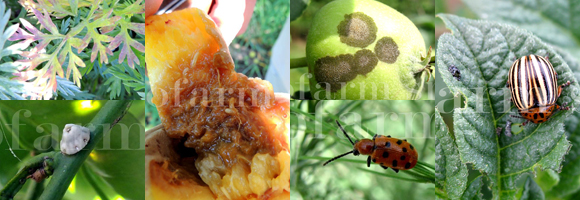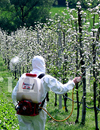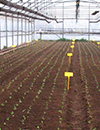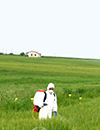Nematological analysis
Nematode infestations, for their symptomatology often confused with those due to other causes, are often undiagnosed and lead to incorrect control strategies. Frequently nematocides are applied without an infestation in progress as contrary do not perform any intervention in case of need. This unfortunately happens in absence of a soil nematological diagnosis.
Analyses of this kind can not be delegated to the laboratory equipment, which is needed, but to a "professional Nematologist" who has the ability to read the quality of the nematodes fauna, its amount, the knowing of the damage thresholds for that particular crop and to evaluate, among various possibilities of intervention (only in case of need), the most effective strategy.
Biofarm Test Facility S.r.L. has these possibilities (structure and duties) and can make itself available to the Multinationals of PPP even when the efficacy trials are conducted in other EU countries, and to the farms on national territory in order to carry out nematological analysis and provide appropriate solutions to the farms of all segments (horticolture, fruit and floriculture and industrial crops).
In this regard, it is emphasized that the nematological problem must be included in the extended sector of phytoiatry as one of the problems that proceeds in association with the other, not individually.
Indeed some species of nematodes have got the ability to transmit some viruses economically important for different crops. An example is "Grapevine fanleaf" (GFLV) which is the most economically important virus transmitted by Xiphinema index to the grapevines everywhere cultivated.
No less serious are the synergistic associations that different species of nematodes (Globodera, Heterodera, Meloidogyne, Pratylencus, etc.) contract with different phytopathogenic fungi (Phytophthora, Rhizoctonia, etc.). In presence of such associations, the nematocide treatments must not disregard the fungicide treatments and vice versa and, if not done, the damages can lead to a considerable impact on income.
Finally, neither should be undervalued the various associations that nematodes contract with the insects that act as vectors or are able to parasitize them (biological control) as in the case of entomopathogenic nematodes (Steinernematidae and Heterorhabditidae).
Biofarm is also available for a possible request for collaboration before setting up the efficacy trials.
It can be noticed that the phytoiatric performance of a nematocide can be enhanced if you choose the most suitable timing for the efficacy of the control, doses, number of treatments and possible alliances with mainly agronomic and biological means.




